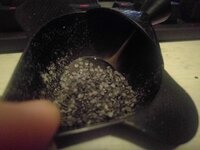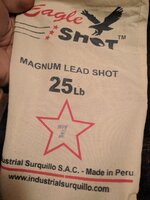- Messages
- 338
- Reactions
- 847
Thank you for all the input. I've read quite some stuff now about powders and their purpuse.
One thing that I couldn't quite find out about was the wads, except, of course to use a different one that holds more shot for steel to archive the same weight. The question is, do all the different shot sizes require different wads? Or is it just a matter of what fits in?
Steel shot wads have no cushion section because a) steel is so hard it does not deform on firing so cushioning is unnecessary b) as stated there is more room for the shot.
Steel shot wads are also thicker to protect the BORE from the steel shot pellets.
The good thing about steel is it doesn't deform and tends to pattern very well as the pellets stay round.
To achieve some degree of parity with lead, steel shot has to a) use larger pellets to make up for the lighter material b) be driven faster (+1400fps for steel vice 1200 fps lead).
Steel shot payload weights will generally be lighter than lead for the same size case. You just can't get enough steel in there to make up the difference and still get higher velocities.
Some of the newer non-toxic shot (HeviShot for example) is actually heavier than lead. Being hard like steel the correct wad for it is similar to steel shot wads with no cushion section. Being heavier than lead, you can use smaller shot sizes and identical or slightly slower velocities to maintain parity with lead. Being more dense means the shot column is shorter for an identical shot weight and that has to be adjusted with a filler wad to get the correct wad column height.
Lead being soft, lead shot wads are designed to protect the SHOT from deformation on firing, hence the cushioning section. The petals also protect the shot from being scrubbed flat on the barrel. Out of round pellets do not fly straight and leave the pattern early. You will also find variations of lead shot with various amounts of hardening (antimony) and coatings (copper and nickel) as well as buffering material to add to the shot charge. All designed to keep the pellets round and in the pattern.
Lead shot wads come in different configurations to accommodate different shot charge weights as well as to fit properly in a particular brand of case. Getting the correct wad column height is crucial to getting a good crimp. Shot size has nothing to do with wad selection.
If you're confused, good. This is why we don't freelance and just start dumping anything we have on hand into a case.
Again, get a good manual with a beginners how to section and RTFM.













